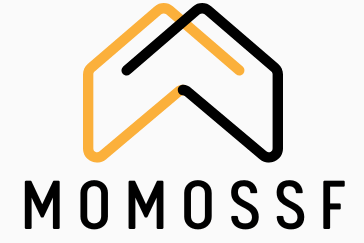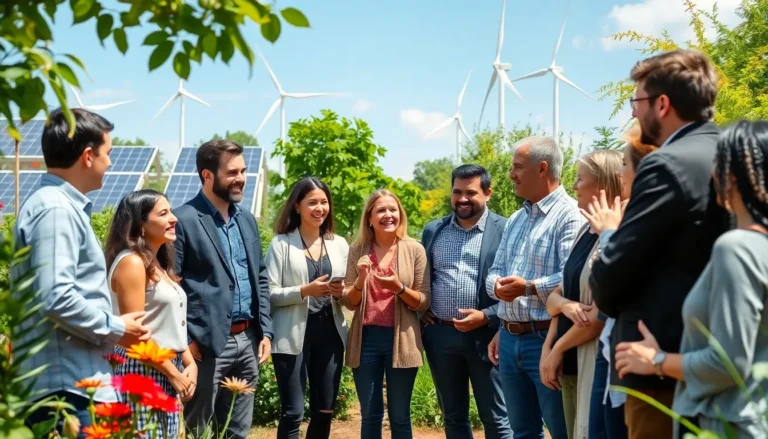Imagine waking up to the sound of chirping birds instead of blaring alarms. Picture sipping coffee on a porch that overlooks a serene forest rather than a bustling city street. Off-grid cabins offer a chance to escape the chaos and reconnect with nature, all while embracing a sustainable lifestyle.
Whether you’re dreaming of a cozy retreat or a full-time residence, the possibilities are as vast as the wilderness itself. From tiny homes that fit snugly in the woods to luxurious log cabins with all the bells and whistles, off-grid living can be both charming and practical. So grab your plaid shirt and your best hiking boots; it’s time to explore some creative off-grid cabin ideas that’ll make you want to trade in your city life for a slice of tranquility.
Table of Contents
ToggleOverview of Off Grid Cabin Ideas
Off-grid cabins present a unique way to find solace in nature while maintaining independence from conventional utilities. Various styles exist, catering to different needs, and inspire creativity among prospective builders. Tiny homes often serve as a popular choice for minimalist lifestyles, with their compact designs maximizing functionality. Log cabins provide a rustic charm, blending seamlessly into forested surroundings.
Sustainable materials figure prominently in construction, promoting ecological balance. Reclaimed wood and bamboo rank among favored options for their reduced environmental impact. Solar panels, wind turbines, and rainwater harvesting systems support self-sufficiency. Some cabins incorporate composting toilets and greywater systems, further minimizing reliance on outside resources.
Design flexibility allows for personalization in layout and features. Open-concept interiors encourage spaciousness, while large windows invite natural light and stunning views. Some off-grid cabins come equipped with outdoor decks, forming perfect spaces for relaxation or outdoor dining. Creative use of space transforms areas, turning closets into workstations or lofts into sleeping quarters.
Building codes and zoning regulations, however, play crucial roles in planning. Researching local guidelines ensures compliance while choosing the ideal location. Accessibility to essential resources, like firewood and water sources, becomes vital in cabin planning. Establishing community connections can also enhance the off-grid experience, fostering collaborative efforts in maintaining shared spaces.
Exploring off-grid cabin ideas connects individuals to nature, elevating their lifestyle with freedom and tranquility. Each option offers distinct benefits and challenges, guiding future off-grid enthusiasts in creating their dream retreat.
Benefits of Off Grid Living
Off-grid living provides numerous advantages, enhancing both personal freedom and ecological sustainability. Individuals often find the experience transformative and fulfilling.
Environmental Impact
Off-grid cabins significantly reduce reliance on fossil fuels. They promote the use of renewable energy sources like solar panels and wind turbines. Sustainable materials, such as reclaimed wood and bamboo, contribute to lower carbon footprints. Clean water systems, including rainwater harvesting, minimize resource depletion. By maintaining natural habitats, off-grid living encourages biodiversity. This lifestyle helps individuals connect with their environment, leading to greater ecological awareness. Off-grid dwellers often contribute to less air and water pollution, creating healthier ecosystems.
Financial Savings
Living off the grid can lead to substantial financial savings. Eliminating utility bills means lower monthly expenses for electricity and water. Many opt for a smaller carbon footprint and smaller houses, translating into reduced mortgage or rent costs. Off-grid systems may require initial investments, yet they often pay off over time. Utilizing renewable energy lowers long-term energy costs. Growing one’s own food contributes to significant grocery savings. Individuals often become more self-reliant, further decreasing overall living expenses. In essence, off-grid living fosters economic independence while providing a more affordable lifestyle.
Design Inspiration for Off Grid Cabins
Creating an off-grid cabin offers an opportunity for unique design elements that combine functionality with a connection to nature. Design choices reflect personal style and practicality, enhancing the off-grid living experience.
Rustic Designs
Rustic cabin designs embrace natural materials like logs and stone, creating a warm atmosphere. These elements often include exposed beams and wooden interiors, ensuring a cozy, welcoming space. Designing with large porches allows for relaxation amid nature, encouraging outdoor living. Incorporating stone fireplaces adds charm while providing efficient heating. Using reclaimed wood not only enhances aesthetics but also supports sustainability. Windows designed for views maximize natural light and create inviting spaces. Overall, rustic designs celebrate simplicity and harmony with the surrounding landscape.
Modern Aesthetics
Modern off-grid cabins focus on sleek lines and open spaces, blending contemporary style with natural surroundings. Clean architecture minimizes distractions, offering a tranquil retreat. Large glass walls invite light and allow occupants to appreciate outdoor scenery. Sustainable materials, such as bamboo and recycled metal, contribute to energy efficiency and eco-friendliness. Incorporating smart home technologies can enhance convenience while maintaining off-grid independence. Roof-top gardens serve both aesthetic and functional purposes, promoting biodiversity. This design approach integrates modern comforts with an environmentally conscious lifestyle.
Essential Features for Off Grid Cabins
Off-grid cabins incorporate essential features that enhance sustainability and independence. Solar power systems and water collection solutions represent two key elements of this lifestyle.
Solar Power Systems
Solar power systems are pivotal for off-grid cabins. Installing solar panels enables cabins to harness energy directly from sunlight. This setup reduces reliance on fossil fuels and generates clean electricity for lighting and appliances. Batteries can store excess energy, ensuring a steady power supply during cloudy days. Different panel types can suit various budgets and spaces, such as monocrystalline and polycrystalline options. Systems can be customized based on energy needs, making solar power an adaptable and efficient solution.
Water Collection Solutions
Water collection solutions play a vital role in off-grid living. Rainwater harvesting systems efficiently capture and store rainwater for household use. Implementing a system involves installing gutters and storage tanks to utilize natural precipitation. This approach conserves water, reducing dependence on external sources. Filtration systems ensure collected water meets safety standards, providing clean drinking water. Overall, these systems promote self-sufficiency and environmental stewardship, essential aspects of off-grid cabin life.
Sustainable Materials for Cabin Construction
Sustainable cabin construction utilizes eco-friendly materials that minimize environmental impact. Reclaimed wood emerges as a popular choice, providing character while preventing deforestation. Bamboo offers another excellent option due to its rapid growth and renewability.
Straw bales present effective insulation and contribute to a reduced carbon footprint. Cob, a combination of clay, sand, and straw, creates sturdy walls that assist in temperature regulation. Earthbags, often made from polypropylene, promote thermal stability and enhance durability.
Natural stone is also favored for its longevity and aesthetic appeal, requiring little maintenance over time. Recycled metal roofing materials provide both functionality and eco-consciousness, diverting waste from landfills. Concrete mixed with recycled materials can enhance structural integrity while respecting the environment.
Choosing local materials supports regional economies and reduces transportation emissions. Many off-grid cabin builders explore sustainable alternatives through innovations like hempcrete, which combines hemp fibers with lime for a strong, insulating wall material. Additionally, rammed earth construction offers an energy-efficient alternative by utilizing compressed earth for building structures.
Investing in sustainable materials leads to healthier living environments. Using low-VOC paints and finishes ensures reduced indoor air pollution, contributing to overall well-being. Builders also incorporate natural fibers, such as wool and cotton, to enhance insulation and comfort.
Applying these sustainable materials helps create off-grid cabins that thrive in harmony with nature. Not only does it lead to reduced carbon footprints, but it fosters an environment of tranquility and connection to the surroundings. Ultimately, selecting responsible materials plays a vital role in encouraging sustainable off-grid living.
Off-grid cabins offer a unique opportunity to embrace nature while promoting a sustainable lifestyle. They provide a retreat from the hustle and bustle of urban life, allowing individuals to reconnect with their surroundings. With a variety of styles and designs available, there’s something for everyone, whether seeking a cozy tiny home or a spacious log cabin.
By incorporating sustainable materials and renewable energy solutions, these cabins not only reduce environmental impact but also foster a sense of independence. As more people seek tranquility and self-sufficiency, off-grid living continues to gain popularity. Ultimately, these cabins serve as a reminder of the beauty and simplicity that comes with a life closer to nature.






